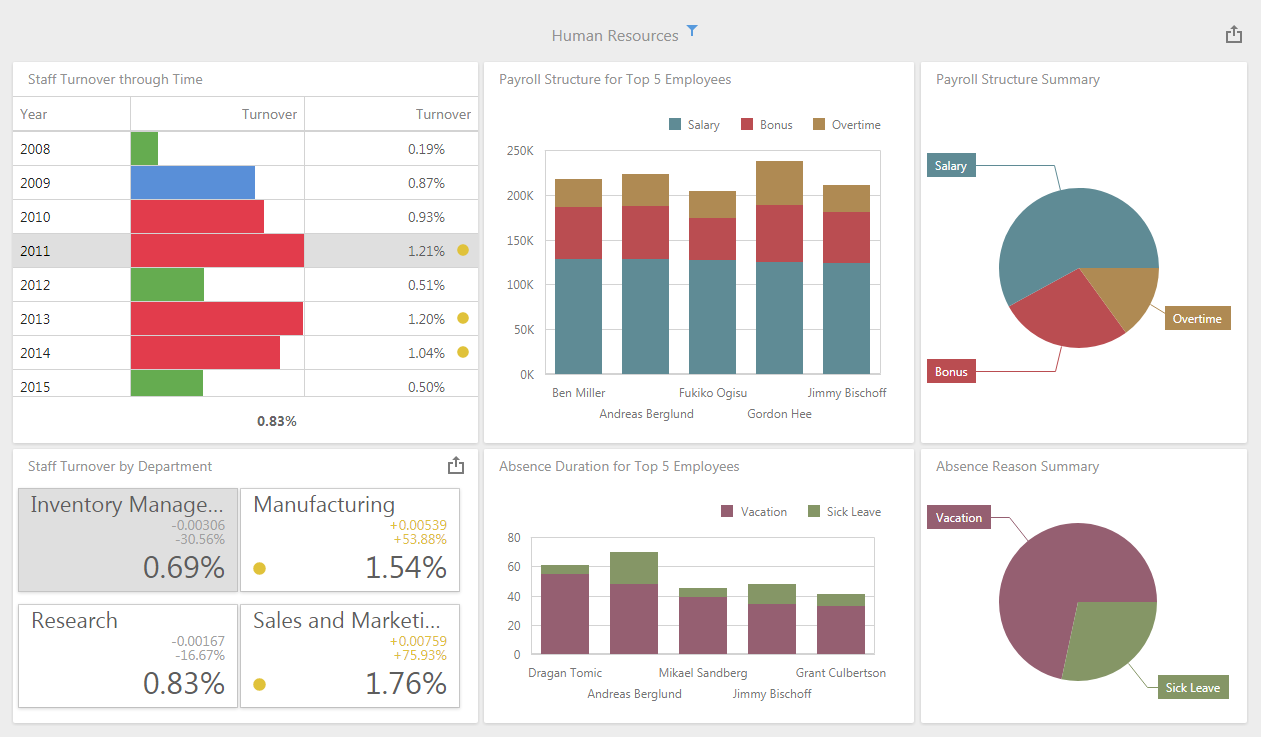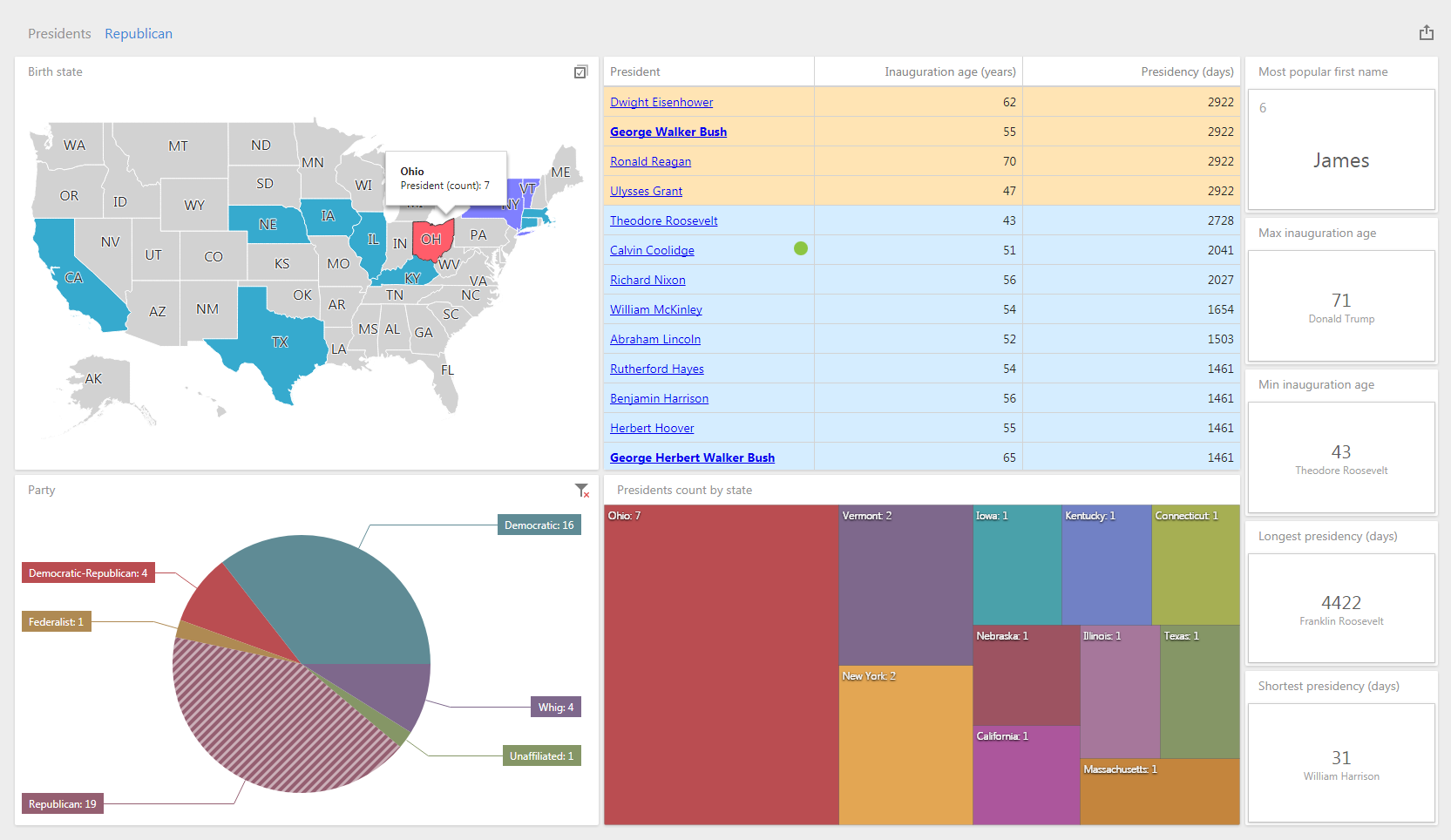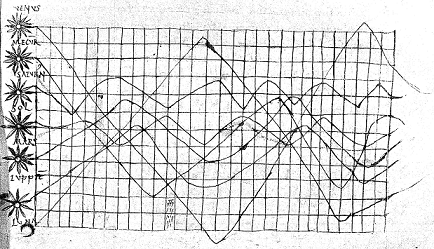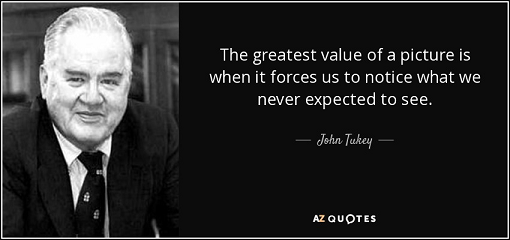Dashboard - what is it and why will it be useful to you or a modern way to make secret explicit

Probably few of us thought that almost from birth I used dashboards. We received some information, analyzed, made a decision or even experienced some emotions thanks to them. Yes, a thermometer that measures the temperature when you were sick; clock; the speedometer needle, which has exceeded 200 km / h (well, this may not be for everyone) - all these devices are essentially dashboards or their element. But I would like to talk about interactive analytic dashboards . And, most importantly, to show that in our time such dashboards can be useful to every person, and not just large banks or corporations.
If you have data - it doesn’t matter, you are a housewife with a bundle of receipts from groceries, an athlete with jogging data from Strava or someone else - you can visualize this, evaluate important indicators, and as a result make better decisions.
You do not use dashboards and think that you do not need it? Opinion can change, and horizons will expand, as further: what are dashboards, what goals are achieved with them, key concepts and areas of use, existing tools, many links to relevant resources on the topic, as well as a real example, as from the usual to the first data look, you can extract interesting knowledge ...
The origin and meaning of the term
The dashboard, a dashboard or even a dashboard, arose as a synthesis of powerful mathematical tools of analytics and an optimal graphical representation of the analysis results. The company management wanted to see key performance indicators , trends, dependencies and other metrics in an understandable compact form, as well as interactively change various parameters. In addition to the visualization of data, the main goals achieved with the help of dashboards are related to comparing a particular indicator over time or evaluating relative to other indicators.
Historical reference
Most experts trace the history of visualization of data from graphs of the movement of celestial bodies (someone can argue by pointing to ancient cave paintings). So, Howard Funkhouser discovered a motion chart of celestial bodies dated to the 10th century, which is considered one of the first graphic images of the data.Planet motion chart from an unknown astronomer of the late 10th century
Michael Friendly divides the history of data visualization into several periods:
until the 17th century - early maps and diagrams;
1600-1699 - measurements, theories, ideas;
1700-1799 - new graphic forms;
1800-1850 - the beginning of modern graphics;
1850-1900 - the golden era of statistical graphics;
1900-1950 - modern dark times;
1950-1975 - the rebirth of the visualization of information;
1975 - Our time is high-precision, interactive, and dynamic visualization.
The revival of information visualization in the 50s is probably associated with the end of the Second World War, when the need to improve the economic condition of the participating countries became especially acute. In those years, terms such as data analysis and Business Intelligence (BI) also originated . In modern understanding, the concept of data analysis in 1961 was given by the famous statistician John Tukey , to whom we are also grateful for the introduction of the word “bit” (binary digit). In his works, he also pointed out the need for visualization of statistical information.
The term Business Intelligence was first used in his 1958 article by IBM employee Hans Peter Lahn. In the current usage, as “concepts and methods for improving business decision making and business analysis”, this concept was formed during the development of decision support systems in the mid 80s, at the same time the first ideas of digital dashboards arose.
Dashboard User Manifest
Dashboard users can be called both those who create them, and those who then use them. Accordingly, software products for working with dashboards contain a viewer and editor for both categories of users.
A dashboard is the interface between the analytic engine and those who act as the analytic user. Thus, all principles of building interfaces, methods for improving UX and increasing Usability are applicable to the dashboard.Users of any interactive product want a fast and functional tool. Dashboards in modern conditions of high competition should also take into account the principles of “data visualization” and have a high User Experience , that is, have a “magic interface” . If you choose a tool for creating dashboards, but can’t start working with it for half an hour, then I don’t think that its further use will bring you joy and results.
About the principles of data visualization
As the famous dashboard expert Stefan Few says : “The best data analysis software when you use it to forget about it is such a natural extension of your thinking that you can use it without thinking about the mechanics of the process.” He formulated the principles of interactive visualization for both tool developers and dashboard creators [this is a free translation, read the original ]:
1) simplify - catch the point and show it easier;
2) compare - show the necessary visualizations nearby;
3) accompany - facilitate access to important data;
4) explore- Let me see and find new knowledge;
5) look differently - give different representations of the same data that will give rise to different ideas;
6) ask “why?” - more than “what is happening”, it is important to make it clear “why is this happening”, how did this or that result of actions arise;
7) be skeptics - give the opportunity to ask more questions and immediately get an answer to them;
8) respond - do not just answer questions, provide funds to share knowledge.
Where the phrase “data visualization” sounds, Edward Tufty is necessarily mentioned.- The visualization guru, whom The New York Times calls “Leonardo Da Vinci Data,” and Bloomberg “Galileo Graphics.” He came up with sparklines and wrote several popular books on visualization. Two of his fundamental principles of visualization, very important for dashboards, are most famous:
1) a high ratio of graphics for data to the total space occupied by it (data-ink ratio) - increase the number of useful images in the space occupied by the visualization, i.e. maximize the display of basic information, spend more “ink” on data;
2) absence of graphic garbage (chartjunk) - exclude non-important graphic elements, do not distract from the data with an unnecessary design.
How is clarity achieved?
Analytical data is shown by different widgets from tables and charts to arrow indicators. Some tools allow the programmer to implement the required visualization himself, up to animations, videos or arbitrary infographics. The analytical data itself is a grouped and aggregated source data. It is possible to apply filters and sortings at different levels, cut off data by top values, and create calculated fields of almost any complexity.

Key Concepts of Analytical Dashboards
1) grouping - a method of combining similar data (by some common feature, for example, by the first letter of a word or person’s name);
2) aggregation (amount, minimum, maximum, quantity, etc.) - a way of displaying a fact column from the source database (for example, a unique number of website visitors, or the sum of expenses on products);
3) sorting - ordering the already grouped data according to a given attribute (except for the alphabet, you can sort the names of managers by their highest sales per month, etc.);
4) filtering - data exclusion by a given attribute or complex formula;
5) calculated column- a method of obtaining new data and knowledge using methods for working with dates, strings, mathematical functions (for example, displaying a name and surname, calculating the age according to the date of birth and current date);
6) top (best) values - a way to display the specified number of maximum or minimum values for a given group (for example, the age of the three youngest employees of a large company, or five managers providing maximum sales);
7) widgets (tables, charts, maps, etc.) - actually a way to visualize the above concepts.
Can any data be analyzed?
Dashboards, as a rule, allow you to connect to an extensive list of data sources, starting from an Excel file and ending with multi-million dollar Big Data sources or social networking web services.
Often, a source specialized for analytics is prepared in advance, called a Data Warehouse or a multidimensional OLAP cube . This is done in cases where a data request to the source source takes a lot of time or the request overloads the server, and this is unacceptable.
What means exist
Excel ... yes, MS Excel was for many ( and is! ) The main means of data analysis. MS Office is a fairly inexpensive product (and in Russia until recently, active piracy was free for many), it is available even to a student and, in general, provides a basic set of analysis tools and the ability to write your own scripts.
If you want to implement the full range of functionality of dashboards (and other BI tools) into your workflow, just look at the Gartner Magic Quadrant :

to choose a product from one of the market leaders that provide powerful tools for data analysis, as a rule, as final solutions with a rather high cost.
The research company Gartner is the most authoritative publication that publishes an analysis of any market segment - they can be trusted.Also, many of them - QlikSense , Tableau Public , Sisense , MicroSoft Power BI , etc. - provide public services or free versions for creating dashboards, usually with serious restrictions for use in real business, but powerful enough for personal / non-commercial purposes .
Separately, it should be said about companies wishing to implement dashboards directly into their internal software products. It is more preferable for such companies to purchase a ready-made set of libraries (controls) for creating dashboards. Moreover, many companies, perhaps yours, already have such a set of packages for their office applicationsand they don’t even realize that in a matter of minutes they can implement a powerful business analysis tool. Component libraries are designed specifically for implementation in companies' own software products according to the platform (Desktop / Web). In addition to lower cost, they have flexible licensing terms, as are acquired by one developer and can subsequently be used by an unlimited number of end users. There are many open source libraries (which can be found, for example, on GitHub ), however, they usually allow you to solve only the basic tasks of data analysis.
How to understand that this dashboard manufacturer suits you
Typically, each BI tool maker has demos for dashboards. By watching the demos on the manufacturer’s website, you can initially evaluate how much they cover the required functionality.
1) sales - in which region one or another product is sold better, which of the branches or which of the company’s managers gives the best result, how the sales have changed compared to the previous year, etc .;
2) finances - stock quotes, exchange rates ... how everyone knows the effect of the oil exchange rate on the dollar exchange rate, but what influence, for example, riots in Syria has on the exchange rate, can be clearly seen by making an appropriate analytical dashboard;
3) human resources- specialists can evaluate on one chart how the number of continuing education courses or the level of salary affects staff turnover;
4) health care - the spread of diseases by region, the effect of weather on the spread of viruses, the impact of tightening alcohol and tobacco sales policies on life expectancy, etc .;
5) industry (light, heavy, electronics, etc.) - mapping of promising regions by industry, increase in gas or oil production after installing new equipment, etc.
The list can be continued, but usually everyone has these basic demos, which will allow you to compare already on the manufacturer’s website, and it is also possible to see a solution to your similar tasks.
An example of building and using a dashboard
I emphasize once again - there is data in any field of activity . And if there is data, then they can be analyzed. Using dashboards, you can extract new knowledge and improve performance, or even just look at this data from a different angle every day, thanks to visual presentation and interactive analytics.
As an example, I decided to consider something quite relevant, simple and generally accessible, while not entirely banal. By coincidence, not so long ago I was interested in the details of the election of US presidents, in particular who was the youngest and who is the oldest president. I ran into a list of American presidents, which I decided to use as a data source for my example (I just supplemented it with the dates of life and the birthplace of the president).
For the simplest dashboard, I used several standard widgets: a map by state; Pie chart for party affiliation; a table for presidents with links to Wikipedia and marks on conditions with a color scheme for the terms of the presidency; tree chart for the number of people from certain states and a card for some regional indicators. I made some widgets interactive - you can click on them and thereby filter others according to the selected indicator. If you change the original data table, for example, enter data about the new president, all indicators will be recalculated automatically.
Hereyou can try the live example, change or create your own dashboards on this data table, save them in a temporary session or download the resulting dashboard xml (there is also a separate view mode or you can download the project ):

How i made this dashboard
For more than seven years now, developing DevExpress products for Business Intelligence, I also decided to act as a user and use a set of components to create DevExpress Web Dashboard dashboards , for which I:
1) downloaded the Universal package ;
2) created an ASP.NET MVC application using a ready-made example as a basis ;
3) connected to a database, in my case, an Excel table with data on presidents (I implemented my version of the dashboard repository so that you can save them in a temporary session);
4) launched the resulting application and created a new dashboard;
5) made calculated fields(age of taking office in years and terms of presidency in days, auxiliary to conditional formatting);
6) created widgets :
- a map of the states, coloring the States by the number of presidents born there;
- a table and added conditional formatting : color by time of reign, bold for the names of the current presidents, icons for birth / death dates equal to Independence Day;
- a pie chart by party affiliation and included interactive filtering: by clicking on a segment, the map and table show the filtered data;
- tree diagramalso in the States and in the number of presidents born there, I specifically wanted to show the differences in the visualization of the same data;
- Cards for displaying important indicators using top values .
It's clear that:
- several states (Virginia, Ohio, New York, Massachusetts) give more presidents than others;
- most of all there were Republican presidents (19), and 7 of them were born in Ohio, however, there were not much less Democrats (16), which indicates a fairly stable change of parties;
- 6 presidents called James (thus, any James from Virginia has more chances to become president than others);
- William Harrison was only 31 days in office, and Franklin Roosevelt was 4422 days, i.e. more than 12 years;
- Donald Trump is the oldest who took office as president at 71, and Theodore Roosevelt is the youngest (43 years old);
- Calvin Coolidge is the only president born on Independence Day (July 4);
- Thomas Jefferson, James Monroe and John Adams on the Independence Day of the United States went to another world, and none of them was a pure Republican or Democrat;
- 5 former presidents living (James Carter, George Herbert Walker Bush, George Walker Bush, Bill Clinton and Barack Obama).
Of course, this is just an example and you will have other data, much more voluminous and diverse, but the essence and principles will not change: you can replace the birthdays of presidents with the dates of purchases of goods or bike rides, the terms of office - by the number of goods or the time of training, the states - to shops or jogging routes, etc. Look, the initially “raw” table of input data is processed by the analytical engine and turns into visually perceived entities.
Conclusion
In recent years, due to the development of digital and software technologies in all areas of human life, dashboards find their application in new areas, such as, for example, social networks, fitness applications, etc. Already today, smart-watches show dashboards, it is not surprising if tomorrow you will see an interactive dashboard on your fridge with a note who most often opens the fridge and recommendations for eating products to different family members.
List of sources used
[1] en.wikipedia.org/wiki/Dashboard_(business)
[2] uxmag.com/articles/the-future-of-information-dashboards
[3] en.wikipedia.org/wiki/Key Performance Indicators
[4] dashboardinsight. com / articles / digital-dashboards / fundamentals / what-is-a-dashboard.aspx
[5] en.wikipedia.org/wiki/Data Analysis
[6] en.wikipedia.org/wiki/Business_intelligence
[7] en.wikipedia. org / wiki / Exploratory_data_analysis
[8] en.wikipedia.org/wiki/John_Tukey
[9] en.wikipedia.org/wiki/Hans_Peter_Luhn
[10] en.wikipedia.org/wiki/Decision_support_system
[11] Chen C.-H., Hardle W., Unwin A. (Eds.) Handbook of Data Visualization. - Springer, 2008 .-- 936 p. - ISBN: 3540330364 / (chapter on the historical part: www.datavis.ca/papers/hbook.pdf )
[12] azquotes.com/quote/593304
[13] interaction-design.org/literature/book/the-encyclopedia- of-human-computer-interaction-2nd-ed / data-visualization-for-human-perception
[14] uxmatters.com/mt/archives/2010/11/dashboard-design-101.php
[15] habrahabr.ru/ company / devexpress / blog / 280180 / # habracut
[16] Stephen Few, Information Dashboard Design: The Effective Visual Communication of Data (O'Reilly, 2006)
[17] perceptualedge.com/blog
[18]tableau.com/blog/stephen-few-data-visualization
[19] www.edwardtufte.com/tufte
[20] Edward R. Tufte 'The visual display of quantitative information', Graphics Press, 2009;
[21] en.wikipedia.org/wiki/DataWarehouse
[22] en.wikipedia.org/wiki/OLAP-cube
[23] exceltip.ru/what-and-dashboard-dashboard
[24] gartner.com/doc/3611117 / magic-quadrant-business-intelligence-analytics
[25] powerbi.microsoft.com/en-us/blog/gartner-positions-microsoft-as-a-leader-in-bi-and-analytics-platforms-for-ten -consecutive-years
[26] en.wikipedia.org/wiki/Gartner
[27] predictiveanalyticstoday.com/open-source-dashboard-software
[28] some services, component sets, etc.:
qlikcloud.com
public.tableau.com/en-us
sisense.com/solutions/cloud-bi
powerbi.microsoft.com/ru-ru
componentsource.com
github.com / search? o = desc & q = dashboard & s = stars & type = Repositories
[29] en.wikipedia.org/wiki/List of_US Presidents
[30] en.wikipedia.org/wiki/Internet Refrigerator
Pictures:
[1] devexpress.com/Products/NET /Dashboard/i/dashboard-banner.jpg
[2] upload.wikimedia.org/wikipedia/commons/6/61/Clm_14436_ecliptic_diagram.png
[3] azquotes.com/picture-quotes/quote-the-greatest-value-of -a-picture-is-when-it-forces-us-to-notice-what-we-never-expected-john-tukey-59-33-04.jpg
[4] info.microsoft.com/rs/157-GQE-382/images/EN-CNTNT-PowerBI-Gartner-MQ-2017.png
[2] uxmag.com/articles/the-future-of-information-dashboards
[3] en.wikipedia.org/wiki/Key Performance Indicators
[4] dashboardinsight. com / articles / digital-dashboards / fundamentals / what-is-a-dashboard.aspx
[5] en.wikipedia.org/wiki/Data Analysis
[6] en.wikipedia.org/wiki/Business_intelligence
[7] en.wikipedia. org / wiki / Exploratory_data_analysis
[8] en.wikipedia.org/wiki/John_Tukey
[9] en.wikipedia.org/wiki/Hans_Peter_Luhn
[10] en.wikipedia.org/wiki/Decision_support_system
[11] Chen C.-H., Hardle W., Unwin A. (Eds.) Handbook of Data Visualization. - Springer, 2008 .-- 936 p. - ISBN: 3540330364 / (chapter on the historical part: www.datavis.ca/papers/hbook.pdf )
[12] azquotes.com/quote/593304
[13] interaction-design.org/literature/book/the-encyclopedia- of-human-computer-interaction-2nd-ed / data-visualization-for-human-perception
[14] uxmatters.com/mt/archives/2010/11/dashboard-design-101.php
[15] habrahabr.ru/ company / devexpress / blog / 280180 / # habracut
[16] Stephen Few, Information Dashboard Design: The Effective Visual Communication of Data (O'Reilly, 2006)
[17] perceptualedge.com/blog
[18]tableau.com/blog/stephen-few-data-visualization
[19] www.edwardtufte.com/tufte
[20] Edward R. Tufte 'The visual display of quantitative information', Graphics Press, 2009;
[21] en.wikipedia.org/wiki/DataWarehouse
[22] en.wikipedia.org/wiki/OLAP-cube
[23] exceltip.ru/what-and-dashboard-dashboard
[24] gartner.com/doc/3611117 / magic-quadrant-business-intelligence-analytics
[25] powerbi.microsoft.com/en-us/blog/gartner-positions-microsoft-as-a-leader-in-bi-and-analytics-platforms-for-ten -consecutive-years
[26] en.wikipedia.org/wiki/Gartner
[27] predictiveanalyticstoday.com/open-source-dashboard-software
[28] some services, component sets, etc.:
qlikcloud.com
public.tableau.com/en-us
sisense.com/solutions/cloud-bi
powerbi.microsoft.com/ru-ru
componentsource.com
github.com / search? o = desc & q = dashboard & s = stars & type = Repositories
[29] en.wikipedia.org/wiki/List of_US Presidents
[30] en.wikipedia.org/wiki/Internet Refrigerator
Pictures:
[1] devexpress.com/Products/NET /Dashboard/i/dashboard-banner.jpg
[2] upload.wikimedia.org/wikipedia/commons/6/61/Clm_14436_ecliptic_diagram.png
[3] azquotes.com/picture-quotes/quote-the-greatest-value-of -a-picture-is-when-it-forces-us-to-notice-what-we-never-expected-john-tukey-59-33-04.jpg
[4] info.microsoft.com/rs/157-GQE-382/images/EN-CNTNT-PowerBI-Gartner-MQ-2017.png


